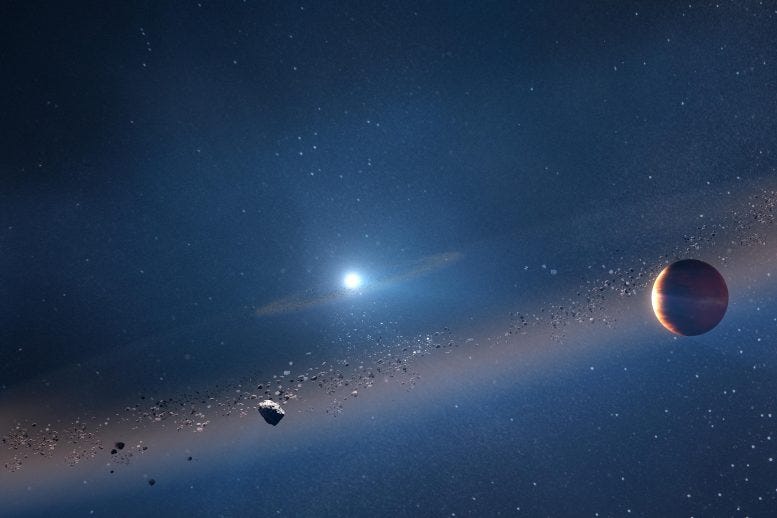A Glimpse into the Cosmic Future of Our Solar System
Written on
Chapter 1: Cosmic Evolution and the Fate of Stars
The life cycle of stars is dictated by their lifespan, and every star system has a predetermined timeline. In a few billion years, our own solar system will face a similar fate as the Sun exhausts its nuclear fuel. Stars evolve into a red supergiant phase, engulfing nearby planets before collapsing into a white dwarf—a hot, dense remnant of their former self. These white dwarfs are faint and challenging to detect, but they offer significant insights into cosmic evolution.
In light of this, when the Sun reaches its end (approximately five billion years from now), it's predicted that the four inner planets will be incinerated. However, gas giants like Jupiter and Saturn are expected to endure this catastrophic event. Recent observations by astronomers have confirmed this grim scenario through the study of a star system resembling our own, located near the Milky Way's center.
Researchers from the University of Warwick leveraged the W. M. Keck Observatory on Maunakea in Hawaii to provide these new insights. Their findings indicate the presence of a Jupiter-like planet with an orbit comparable to Jupiter’s, situated around a white dwarf star roughly a quarter of the way towards the center of our galaxy.

"Evidence shows that planets at a sufficient distance can persist beyond the demise of their star. This finding suggests that both Jupiter and Saturn may survive the Sun's transformation into a red giant when it exhausts its nuclear fuel and ultimately self-destructs."
— Joshua Blackman, Lead Author of the Study

The white dwarf in question possesses a hot, dense core comparable in size to Earth, with about half the mass of the Sun. This marks the first instance where astronomers have observed remnants of a dying star system, confirming that outer planets can indeed survive the explosive phase of a red giant. Most critically, it provides a preview of our solar system's ultimate future.
The first video, "A Planet Discovered Orbiting Dead Star May Be A Glimpse into Solar System's Future," explores the implications of this discovery and how it relates to our solar system.
The high-resolution images captured using adaptive optics and the Near-Infrared Camera (NIRC2) at the Keck Observatory provided an accurate estimate of the white dwarf's size and the surviving gas giant—where the former is approximately 60% the mass of the Sun, while the latter is about 40% more massive than Jupiter. The planet was identified through the gravitational microlensing technique.
Gravitational microlensing occurs when a star aligned with a more distant star magnifies the latter's light due to gravitational effects. However, researchers found that the light from the foreground star was too dim to be a typical main-sequence star. After ruling out other possibilities like a brown dwarf or black hole, they concluded it must be a white dwarf.
Moving forward, the research team plans to contribute their findings to a broader statistical study to identify how many other white dwarfs host surviving planets. NASA’s upcoming Nancy Grace Roman Telescope mission aims to directly image giant planets, helping astronomers ascertain whether it’s typical for Jupiter-like planets to escape their star’s final moments.

The second video, "Mars is the Future: The Day the Dinos Died, a Star's Death in 3 Acts," delves into the broader cosmic narrative, linking the fate of our solar system to the larger universe.
Complete research findings have been published in the Journal of Nature.
